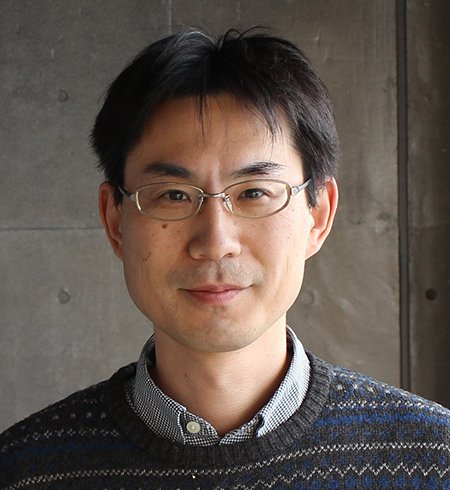| Name | ISHIDA Hiroyuki |
|---|---|
| Position | Associate Professor |
| Tel | 022-757-4288 |
| Fax | 022-757-4289 |
| hiroyuki*tohoku.ac.jp(Please replace * with @) | |
| Research Interest | Plant nutrition, Plant Physiology, Plant protein metabolism |
| Career | Education: B.S. Faculty of Agriculture, Tohoku Univ. (1994), Ph.D. (Agri.) (1999) Research Experience: Assis. Prof., Tohoku Univ. (1999―2009), Assoc. Prof., Tohoku Univ. (2009―) |
| Research map | https://researchmap.jp/read0055371 |
| Research Projects | |
|
SDGs Learning from Plants: Deciphering Mechanisms of Plant Nitrogen Recycling and Application to Improvement of Crop Nitrogen Use Efficiency Current crop productivity greatly depends on nitrogen fertilization. Excess nitrogen fertilization is increasing the concentration of greenhouse gases and causing nitrate to flow into water systems. Engineering nitrogen use efficiency is essential for sustainable and productive agriculture. In crop plants, around 75% of nitrogen is distributed to chloroplasts, where it is mainly used as proteins for photosynthesis. On the other hand, chloroplast proteins are actively degraded in lower leaves, which are unfavorable to photosynthesis, and are transferred to newly expanding leaves for recycling as a nitrogen source. We are studying mechanisms of plant protein metabolism by using cell biology and molecular genetics of a model plant, Arabidopsis thaliana, focusing on the piecemeal autophagy of chloroplasts that we have found so far. By applying the new research findings to rice, we aim to achieve a breakthrough in crop development that improves productivity and nitrogen use efficiency. | |
| Research Seeds | |
|
A new Arabidopsis mutant showing abnormal accumulation of plastid autophagic bodies We identified a new Arabidopsis mutant, gfs9-5, which is defective in a membrane-trafficking factor and shows the abnormal accumulation of plastid bodies that arise during piecemeal autophagy processing of plastids. The mutant enables the direct observation of plastid body formation, which up until now has been difficult to achieve, and as such proves a useful genetic tool to investigate piecemeal plastid autophagy further. URL: https://www.agri.tohoku.ac.jp/jp/news/topics/detail/20211122.html |
|




